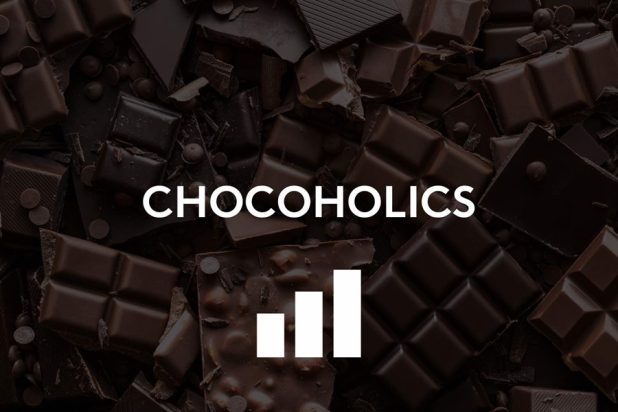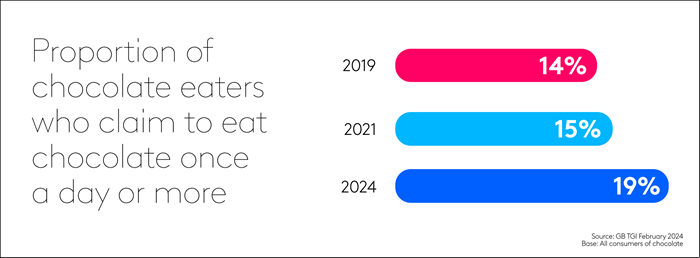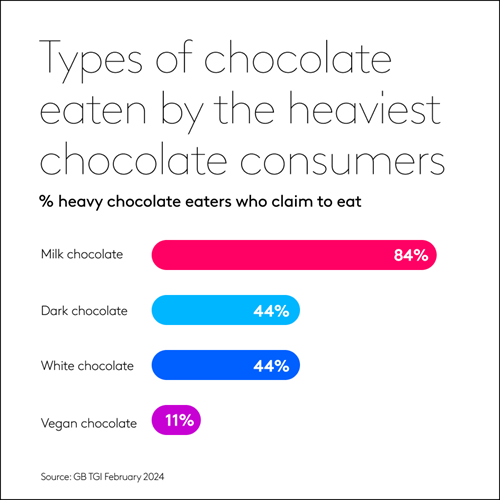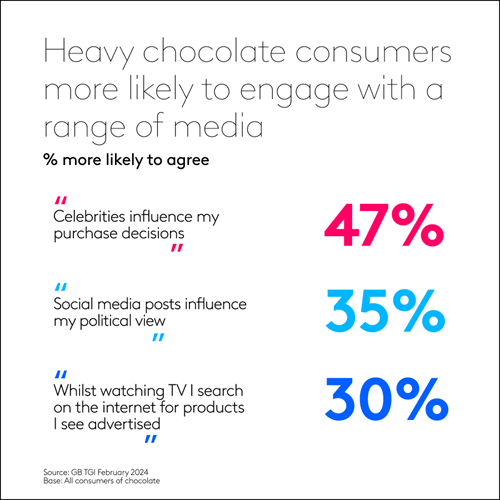Our latest TGI data reveals the trends in consumers’ relationship with chocolate in Britain

During this period of Lent, some try and give up something they enjoy in the lead up to Easter – with chocolate one of the most common treats people try and cut out.
Our ambivalent relationship with chocolate as both treat and something we feel maybe we should not eat as much of has come into sharper focus as the price of chocolate has been climbing particularly steeply in recent months as bad weather has affected cocoa crops in the world’s main growing regions. Last year alone global cocoa prices rose 25%.
So what are the trends in consumers’ relationship with chocolate?
Latest GB TGI data shows that 77% of Britain’s adults claim to have eaten chocolate bars or other chocolate items in the last 12 months. 19% of these say they eat chocolate at least once a day, representing 7.7 million people. This is a figure that has been gradually rising in recent years.

Whilst milk chocolate is easily the most popular type of chocolate consumed by these heavy chocolate consumers, around two-thirds of them also claim to eat dark or white chocolate. Vegan chocolate, whilst more niche, is also chosen by almost four million adults and over 800,000 heavy chocolate users.
Both dark chocolate and white chocolate saw a spike in claimed consumption during the pandemic (50% and 52% usage among heavy chocolate consumer respectively in late 2021) – no doubt prompted in part by the heightened interest in home baking during the lockdowns – but this has since settled back down to pre-pandemic levels.

These heavy chocolate eaters are particularly likely compared to the average chocolate consumer to engage with media and advertising in a variety of ways.
They are also significantly more likely than the average chocolate consumer to admit to being snackers generally. TGI shows that they are 40% more likely to claim that they lack the time to spend cooking and preparing food and also 27% more likely to say that they often eat snacks on the move rather than eating a proper meal.
